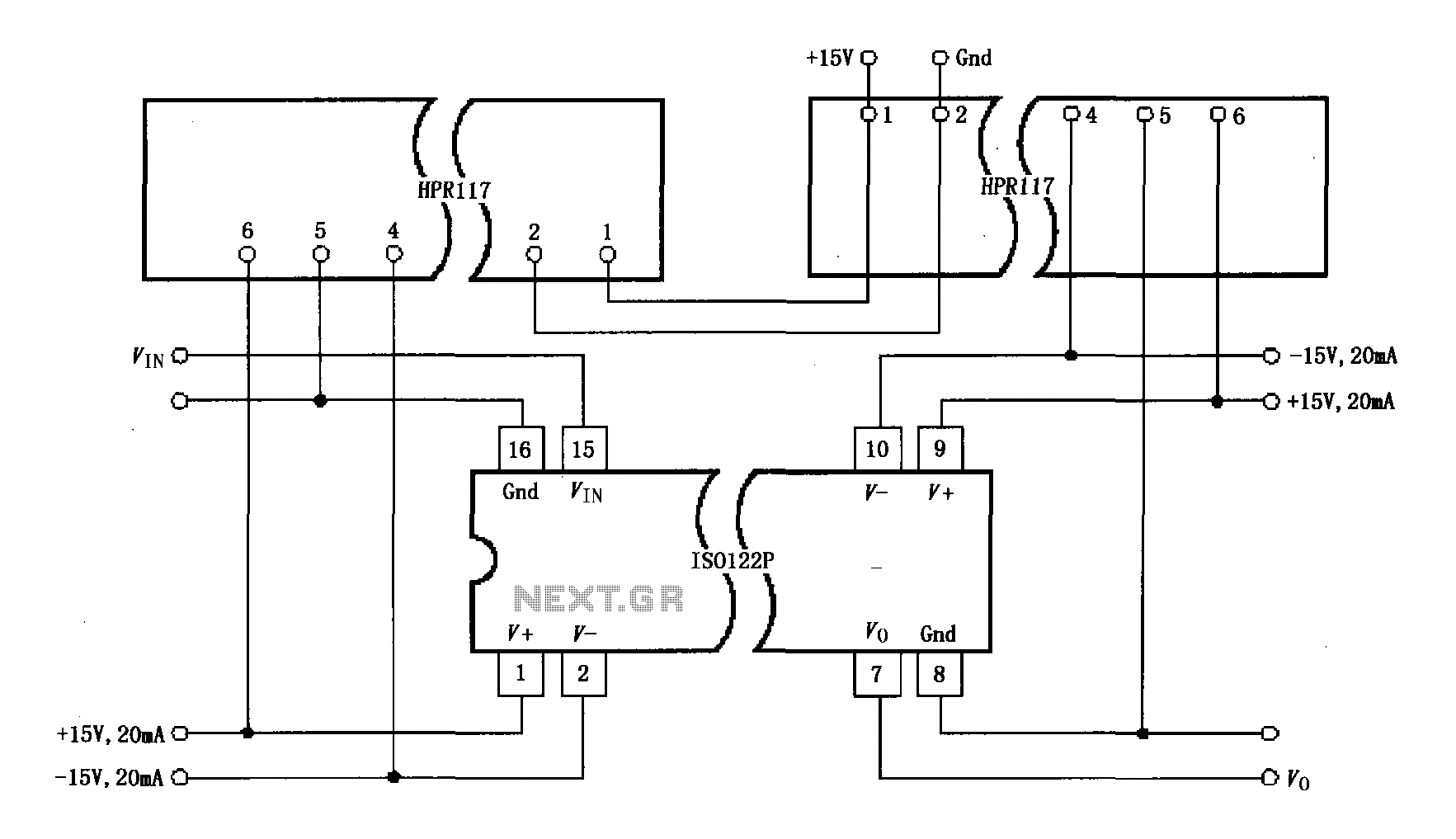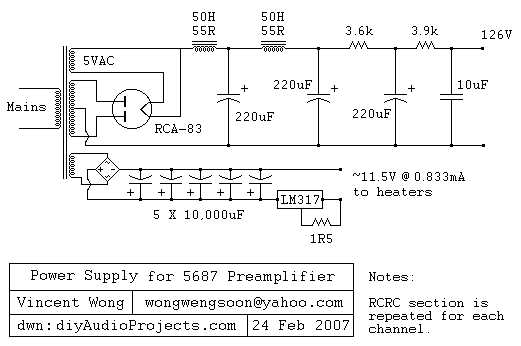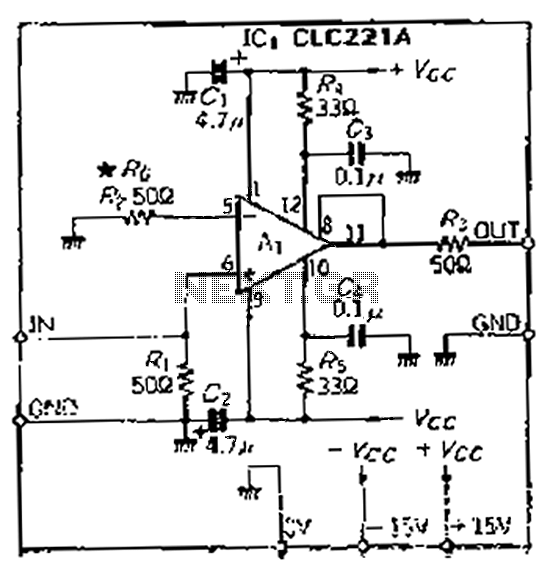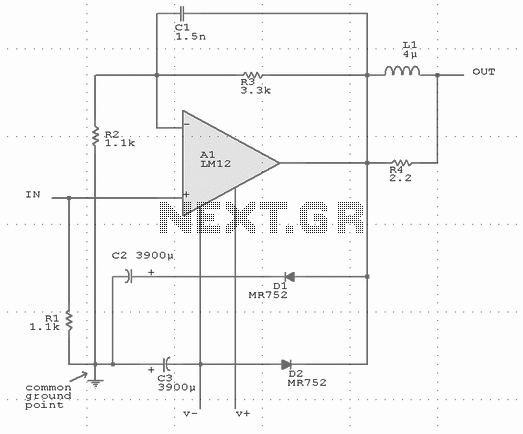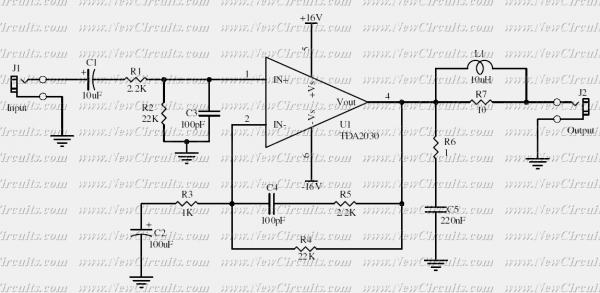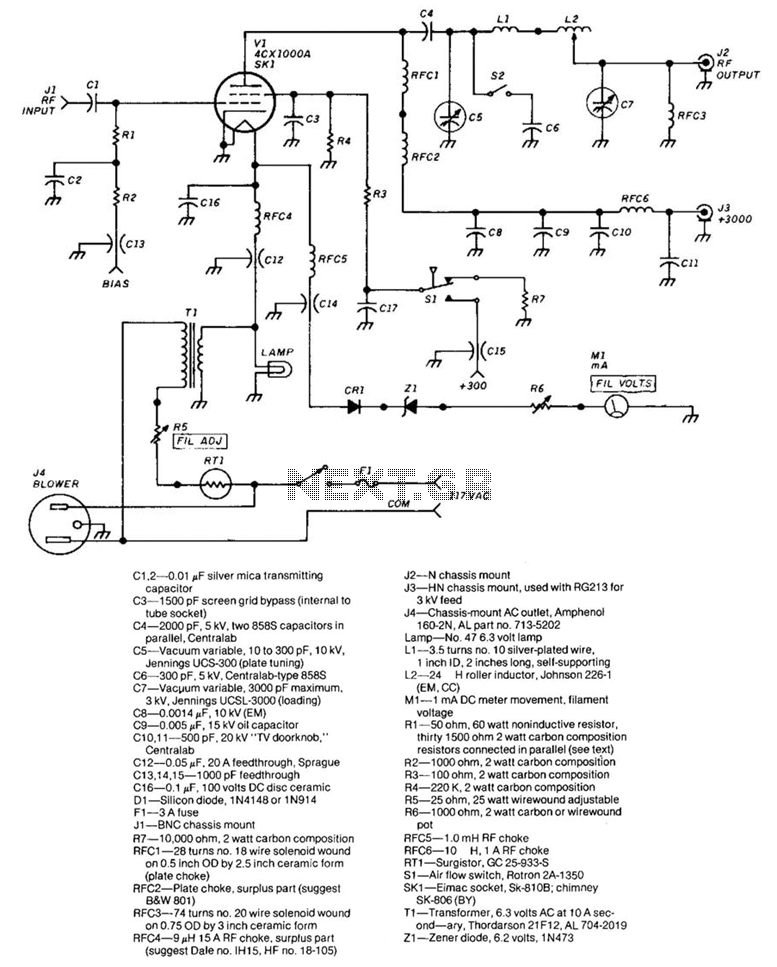
Common collector amplifier via a DC and AC
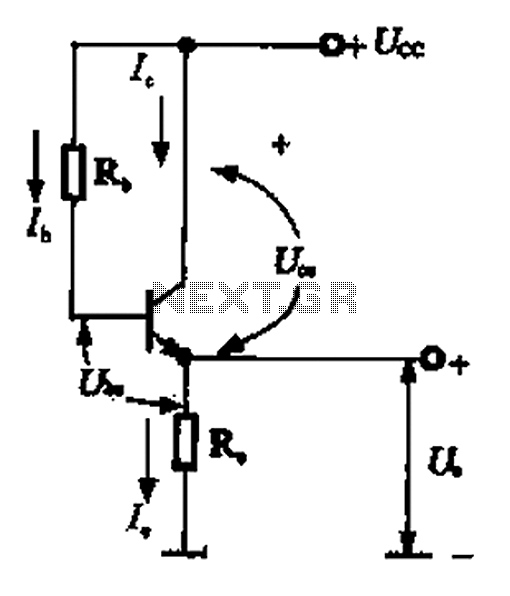
A common collector amplifier can be analyzed through its DC and AC paths, as illustrated in Figure 1-14. The DC path is responsible for providing a biasing circuit for the power transistor, determining whether the transistor is in an active or cutoff state based on the biasing conditions. This circuit also supplies energy to the transistor. The AC path facilitates the functioning of the circuit, where an AC signal is treated as a short circuit, and the internal resistance of the power supply is influenced by the AC signal being shorted.
The common collector amplifier, also known as an emitter follower, is characterized by its ability to provide high input impedance and low output impedance. This configuration is particularly useful in applications where signal buffering is required. The DC analysis of the circuit involves determining the quiescent operating point, which is essential for ensuring that the transistor operates within its active region. The biasing network typically consists of resistors that set the base voltage, allowing for proper transistor operation.
In the AC analysis, the coupling capacitors are crucial as they block DC components while allowing AC signals to pass through. This ensures that the amplifier can respond to varying signal levels without affecting the DC bias point. The output signal, taken from the emitter, is a faithful reproduction of the input signal but with a lower voltage level, making it suitable for driving low-impedance loads.
The performance of the common collector amplifier can be further enhanced by considering factors such as temperature stability, frequency response, and power supply variations. Proper selection of components, including the transistor type and biasing resistors, is essential for optimizing the amplifier's characteristics for specific applications. Overall, the common collector amplifier serves as an effective solution for signal amplification and impedance matching in various electronic circuits. Common collector amplifier via a DC and AC (3) common-collector amplifier circuit DC and AC path when common collector amplifier circuit for analysis, can be divided into DC an d AC two paths shown in Figure 1-14. The DC path to provide a DC bias circuit of the circuit from the power transistor, the transistor is in an enlarged state or the off state, it is mainly determined by the bias. This circuit also provides energy for the transistor circuit. AC AC signal path is functioning circuit, a capacitor AC signal can be regarded as a short circuit, the internal resistance of the power supply also depends on the AC signal is short-circuited.
The common collector amplifier, also known as an emitter follower, is characterized by its ability to provide high input impedance and low output impedance. This configuration is particularly useful in applications where signal buffering is required. The DC analysis of the circuit involves determining the quiescent operating point, which is essential for ensuring that the transistor operates within its active region. The biasing network typically consists of resistors that set the base voltage, allowing for proper transistor operation.
In the AC analysis, the coupling capacitors are crucial as they block DC components while allowing AC signals to pass through. This ensures that the amplifier can respond to varying signal levels without affecting the DC bias point. The output signal, taken from the emitter, is a faithful reproduction of the input signal but with a lower voltage level, making it suitable for driving low-impedance loads.
The performance of the common collector amplifier can be further enhanced by considering factors such as temperature stability, frequency response, and power supply variations. Proper selection of components, including the transistor type and biasing resistors, is essential for optimizing the amplifier's characteristics for specific applications. Overall, the common collector amplifier serves as an effective solution for signal amplification and impedance matching in various electronic circuits. Common collector amplifier via a DC and AC (3) common-collector amplifier circuit DC and AC path when common collector amplifier circuit for analysis, can be divided into DC an d AC two paths shown in Figure 1-14. The DC path to provide a DC bias circuit of the circuit from the power transistor, the transistor is in an enlarged state or the off state, it is mainly determined by the bias. This circuit also provides energy for the transistor circuit. AC AC signal path is functioning circuit, a capacitor AC signal can be regarded as a short circuit, the internal resistance of the power supply also depends on the AC signal is short-circuited.
Warning: include(partials/cookie-banner.php): Failed to open stream: Permission denied in /var/www/html/nextgr/view-circuit.php on line 713
Warning: include(): Failed opening 'partials/cookie-banner.php' for inclusion (include_path='.:/usr/share/php') in /var/www/html/nextgr/view-circuit.php on line 713
